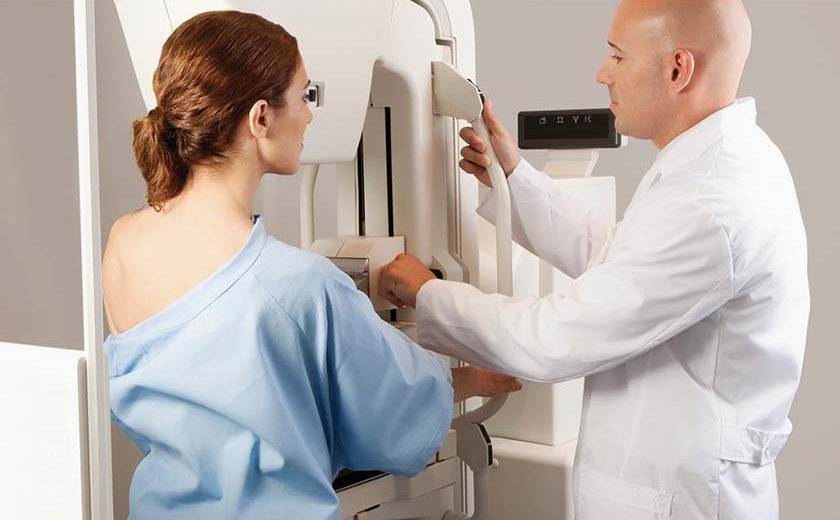The big C is daunting and despairing. When a person is diagnosed with cancer, their world often seems like its collapsing around them.
This is an understandable feeling, but it doesn’t have to necessarily be that way. Today’s advancement in technology has a promising outlook on the increase of cancer survivors in years to come.
‘Early Detection and Early Treatment Save Lives’ has been the mantra for cancer since decades ago. Women who reached the age of 40 are encouraged to get mammograms while manual breast examination should be constantly done by younger women, especially those with a family history of the disease.
Doctors today are able to detect breast cancer at a much earlier stage thanks to advanced technology in screening that could identify the cancer and being able to undergo treatment earlier before it spreads aggressively.
Understanding your condition is the key. Here’s a closer look at breast cancer and what happens down the line.
What Is Breast Cancer?
Breast cancer is a condition that starts from an uncontrolled growth of breast cells that develops into a malignant tumour. It is the most common type of cancer among women in Malaysia. Averages of 4,000 new cases are reported each year, where 1 in 19 Malaysian women are diagnosed with breast cancer.
Are You At Risk?
Being a woman in itself poses a risk of developing breast cancer, although there is a very small percentage of men who are at risk as well. Certain women post a higher risk due to early menarche, late menopause, did not produce children, didn’t breast feed for 6 months, and obesity. However, some inherited their condition from other female family members who had
breast cancer.
Warning Signs:
- Swelling of all or part of the breast
- Skin irritation or dimpling
- Breast pain
- Nipple pain or the nipple turning inward
- Redness, scaliness, or thickening of the nipple or breast skin
- A nipple discharge other than breast milk
- A lump in the underarm area
You Have Been Diagnosed; What To Do Now?
Naturally, you will go through all the motion; shock, anger, sadness and despair. First of all, try your best to calm down and not panic.What
you should do:
- Get a biopsy – the doctor will remove a small piece of tissue from the lump to check it for cancer cells.
- The cancer cells will be graded to predict how fast the cancer is likely to grow and spread.
- Get advice from the doctor on which treatment is best for you.
- Do not give up and stay positive.
Breast Cancer Surgery – Choosing Between a Lumpectomy and a Mastectomy
A lumpectomy is often called breast conserving therapy because the goal is to remove the cancer and leave the healthy tissues behind. A mastectomy is the removal of all the breast gland tissue, which usually includes the nipple as well. Both have the same outcome inoverall survival rates.
With a lumpectomy, the area of cancer could be removed and still maintain a natural looking breast with minimal scarring. With oncoplastic breast surgery technique, tissues are transferred to fill in the spot that was removed by loosening the surrounding tissue and surgically designing the area so that it should not look hollowed out. If you have a mastectomy, you have an option to undergo a breast reconstruction surgery to build a breast shape that looks a lot like your natural breast
Radiation Treatment
Radiation therapy uses high-energy rays to kill any cancer cells that may still be left in the breast after a lumpectomy thus increasing the success rate of the procedure. It is typically not necessary for a patient who is having a mastectomy.
There are 2 types of radiation therapy treatment for breast cancer offered in SunMed:
1) Intraoperative radiotherapy (IORT)
Intraoperative radiation therapy (IORT) is a procedure to treat breast cancer during surgery by delivering a concentrated dose of radiation therapy to a tumour bed, which are the tissues surrounding the cancer.
It is used during a lumpectomy, a breast conservation surgery while the patient is still in the operating room and unconscious. The miniaturised radiation device is inserted in the lumpectomy cavity after the tumour has been removed.
This customisable form of radiation therapy helps kill microscopic disease, reduce the amount of time of radiation treatment and provide an added radiation “boost” to generate a more positive outcome for the surgery.
2) External beam radiotherapy (EBRT)
External beam radiation is one of the most common types of radiation therapy used for cancer treatment. EBRT delivers high-energy rays to tumours using a special X-ray machine called a linear accelerator.
The machine scans the body, and emitting high dose of radiation that could be delivered from any angle and shapes the radiation beam to the contour
of the tumour.
This specialised focus will do less damage to normal tissues while it destroys cancerous cells and shrinks tumours. Examples of EBRT include 3D conformal radiation therapy, IMRT, IGRT, TomoTherapy and stereotactic radiosurgery.
Hormone Therapy for Breast Cancer
Certain types of cancer are affected by hormones in the blood. These hormones attach to special proteins called hormone receptors. These hormone receptors, estrogen receptor-positive (ER-positive) and/or progesterone receptor-positive (PR-positive) help the cancer cells grow. All tumours are checked for hormone receptors by testing the tissue that was removed during a biopsy.
Hormone therapies are often used to treat hormone receptor-positive breast cancers. It slows down or stops the growth of hormone receptor-positive tumours by preventing the cancer cells from getting the hormones they need to grow. It can also be used to treat cancer that relapses after treatment or that have spread to other parts of the body. As it is a form of systemic therapy, it could reach cancer cells in any part of the body and not just in the breast.
Chemotherapy for Breast Cancer
Chemotherapy is a treatment that uses drugs to kill cancer cells. It may be injected into the vein or taken orally. The drug travels through the bloodstream to reach cancer cells in most parts of the body. Chemotherapy does not apply to all breast cancer cases apart from certain conditions that require this method.
Before surgery (neoadjuvant chemotherapy)
Neoadjuvant chemo is given before the surgery takes place. It aims to shrink the tumour so that it can be removed with less extensive surgery.
After surgery (adjuvant chemotherapy)
Adjuvant chemo is used after surgery to try to eradicate any cancer cells that may have been left behind or spread but can’t be detected, even on imaging tests.
For advanced breast cancer
Chemo is normally used as the main method of treatment for women whose cancer has spread outside the breast and underarm area.
What Happens After a Successful Treatment?
The dreaded part is over and there is a huge sense of relief. You give yourself a pat on the back for being a cancer survivor. However, chances of the cancer coming back are always there. It is wise to go for follow-up visits to ensure that you are cancer-free.
 Dr Ng Char Hong
Dr Ng Char Hong
MBChB (UK), M Surgery (UM), AM (Mal)
Consultant Breast & Breast Reconstructive Surgery


